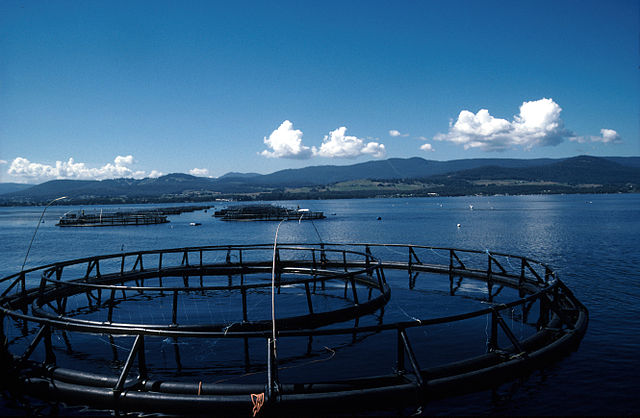Mass fish deaths on the Tasmania coastline in south Australia have made consumers wary of this beloved source of especially Aussie salmon.
The question is whether some of the fish dying from antibiotics and other beach waste are ending up onto plates. And in case they are, consumers face a tough decision as Australia imports very little salmon due to self-sufficiency.
Tasmania provides 90% of domestic market salmon and contributes to the annual national salmon export value of A$247-million ($154.8 million).
Enter the Ecological Question
For now, all eyes are on the rugged coastline of Tasmania island where thousands of salmon have lately washed up dead.
Pledges of financial support to the sector to end the scourge are encountering pleas of environmental protection.
On one side, Australia’s Prime Minister Anthony Albanese has already promised A$37 million ($23.18 million) to support Tasmania’s salmon aquaculture.
On the other side, strong opposition from environmentalists for the government to abandon its support is making choices tough.
According to ABC, ecological watchdogs that include Environment Tasmania have written to the PM to walk off fishermen’s support.
One of the sore environmental spots is salmon-rich Macquarie Harbour, a shallow inlet on the Indian Ocean side of west Tasmania.
Atlantic Salmon Forecast
Amid the ongoing environmental tiff, the world’s harvest of Atlantic salmon that Tasmania farms is increasing, per forecasts.
Analyst group Kontali says production will be 3 to 4% up in 2025 but prices will decline most of the year.
Whether the Aussie salmon sector will go along with the above global trends remains unclear after the mass mortalities. But as the statistics below show, general data can help decode the industry’s direction.
Aussie Salmon Statistics
With a world production share of 2.51% ( 61,227 tonnes), as of 2018, Australia is an emerging market for salmon. It is among five other countries that provide the most supplies excepting Norway (52.4%, 2018) and Chile (27.14%, 2018).
Which challenges affect production?
On the downside, environmental pollution hampers the image of the Aussie salmon industry due to predominant aquaculture. Indeed, farmed salmon production in Tasmania alone accounts for 96% of the state’s yearly fish catch.
How have exports and imports been performing?
Australia rakes in US$262.9 million or 1.5% of the worldwide exports of fresh/ chilled salmon, the 8th highest globally in 2023. Prepared salmon exports in 2023 also earned the country US$38.9 million, equal to a 4% global share. Like other top producers such as Norway, Australia is not a major importer, and relies on home surplus for local consumption.
Which are the top salmon-producing states in Australia?
Tasmania has been producing over 90% of domestic market salmon in the period between 2017 and 2021. The island state’s salmon industry was worth A$156 million ($96.4 million) in 2021, according to the Department of Agriculture, Water and the Environment. Coming second is Victoria in southeast Australia with A$48.6 million ($30.5 million).
How have Aussie salmon prices been changing over the years?
Government figures show export prices declined from a 2018 peak of A$11.99 ($7.52) a kg to 2022’s A$10.33 ($6.48). The report cites COVID-19 distribution disruption for the decline.
